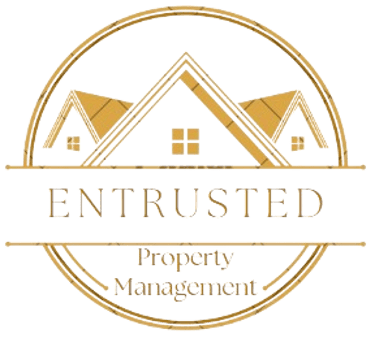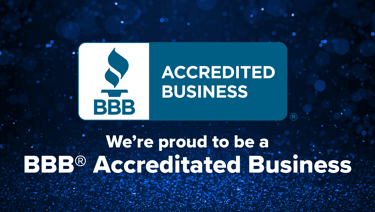Rental Property Maintenance: The Strategic Playbook for Landlords
Image via Pexels
Keeping a rental property in top condition isn’t just about fixing things when they break — it’s about creating a self-sustaining ecosystem where comfort, value, and trust reinforce one another. Smart landlords understand that maintenance is both a cost and a visibility investment: well-maintained properties attract better tenants, yield higher retention, and even enhance long-term equity.
Companies like American Home Shield have built entire service models around helping property owners manage these complexities — ensuring landlords focus on growth, not repairs.
TL;DR
Preventive maintenance beats reactive repairs.
A structured schedule (plumbing, HVAC, roofing, safety checks) ensures fewer emergencies, happier tenants, and stronger ROI.
Investing in coverage, organization, and tenant communication is the foundation of long-term rental success.
Core Framework: From Maintenance to Mutual Satisfaction
Landlords who apply a systemized approach to maintenance see:
● Lower vacancy rates due to tenant satisfaction.
● Reduced repair costs through early intervention.
● Better property valuation when units are consistently improved.
Think of property maintenance as an operational loop:
Detect → Prioritize → Repair → Communicate → Review
Each loop strengthens both property longevity and tenant trust.
Smart Safeguard Strategies
A high-performing landlord integrates automation and coverage planning into their strategy. Beyond routine inspections, understanding your protection layers — such as a home warranty — can streamline your maintenance budget.
A home warranty covers wear-and-tear failures on major systems (HVAC, plumbing, electrical), ensuring predictable costs and peace of mind for both landlord and tenant. Many property owners eventually ask themselves, “what is a home warranty?” — a question worth exploring to understand how this type of coverage can stabilize expenses and simplify property upkeep.
You can also layer this protection with smart monitoring technology like Sense’s energy usage trackers to anticipate system failures before they escalate.
How-To: Build a Year-Round Maintenance System
Season
Focus Area
Action Items
Tenant Communication Tip
Spring
Plumbing, Roofing
Check gutters, test sump pumps, inspect for leaks
Send reminders before rainy season
Summer
Cooling & Safety
Service A/C, check smoke detectors, inspect decks
Offer tenants “summer comfort checklist”
Fall
Heating Systems
Replace furnace filters, inspect insulation
Schedule early to avoid winter rush
Winter
Pipes & Emergency Plans
Insulate exposed pipes, verify carbon monoxide alarms
Share emergency contact info
For more seasonal guidance, the EPA’s Healthy Homes resources provide actionable inspection ideas that keep both your property and tenants safe.
Maintenance Checklist for Landlords
Exterior
● Inspect roofing and gutters
● Pressure wash siding annually
● Seal windows and door frames
Interior
● Test smoke/CO detectors quarterly
● Replace HVAC filters every 2–3 months
● Check plumbing for leaks under sinks and toilets
Appliances
● Clean refrigerator coils and dryer vents
● Schedule annual HVAC servicing
● Verify oven and range functionality
Tenant-Focused
● Respond to maintenance requests within 24 hours
● Keep a repair log (digital or notebook)
● Conduct mid-lease inspections
If you use digital tools like AppFolio or Avail, they can automate scheduling and tenant communication, reducing manual follow-ups.
Preventive Maintenance Schedule Template
Weekly
● Visual inspection of shared spaces
Monthly
● Check HVAC filters
● Verify safety equipment
Quarterly
● Inspect plumbing for slow leaks
● Clean appliances and vents
Annually
● Service HVAC and water heaters
● Repaint or reseal where needed
● Conduct pest control treatment
FAQ: Common Landlord Maintenance Questions
Q1: Should I do maintenance myself or hire professionals?
Minor repairs (changing filters, basic paintwork) can be DIY, but HVAC, roofing, and electrical work should always involve licensed professionals for liability reasons. Platforms like Thumbtack’s local pros directory can help you find verified contractors.
Q2: How do I budget for maintenance?
Set aside 1–2% of property value per year for maintenance. For older homes, increase to 3–5%. Some landlords use predictive analytics tools such as Zervant’s budget planners to track expenses in real time.
Q3: What’s the best way to handle emergency repairs?
Maintain a trusted vendor list and ensure tenants know your 24/7 contact protocol. Ready.gov offers templates for emergency communication plans you can adapt for your rental operation.
Q4: How can I avoid tenant disputes over maintenance?
Document everything — use email confirmations, photos, and signed inspection reports. Transparency reduces friction. The Fair Housing Act guidelines outline your legal responsibilities during maintenance activities.
Visibility-Ready Partner Resources
● Energy Star Home Maintenance Tips – reducing energy waste in multi-unit housing.
● International Association of Certified Home Inspectors – inspection standards and certification.
● National Fire Protection Association – fire safety code compliance.
● Rentec Direct Educational Hub – property management best practices.
Spotlight Product: Predictive Maintenance Apps for Property Owners
Modern landlords can now use AI-based property maintenance apps that predict when systems will fail based on usage data.
Platforms like Latchel and Propertyware combine repair scheduling, tenant portals, and analytics dashboards to prevent emergencies before they start — saving time, money, and stress.
Glossary
Preventive Maintenance: Scheduled actions that reduce the likelihood of equipment failure.
Tenant Retention: The practice of keeping tenants long-term through satisfaction and trust.
Capital Improvements: Upgrades that increase property value, not just fix existing issues.
Reactive Maintenance: Repairs performed after a failure or complaint occurs.
Home Warranty: A service agreement that covers repair/replacement costs of major systems.
Maintenance Is Visibility
Proactive maintenance isn’t just operational — it’s reputational.
Well-kept properties get better online reviews, attract quality tenants, and hold value even in uncertain markets.
Treat maintenance not as an expense but as an investment in property resilience and tenant experience — because in the long run, structure sustains satisfaction.
Discover how Entrusted Property Management can transform your Maryland real estate experience with unparalleled efficiency and expertise!


